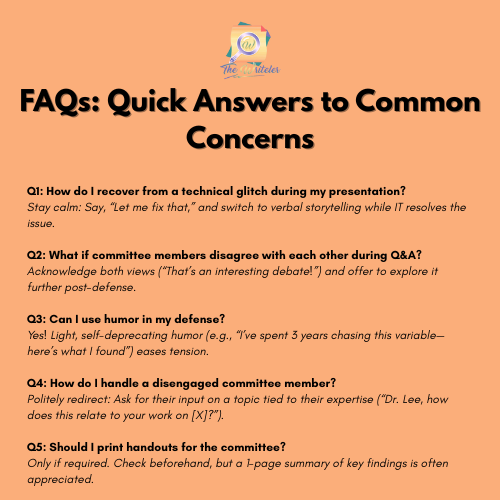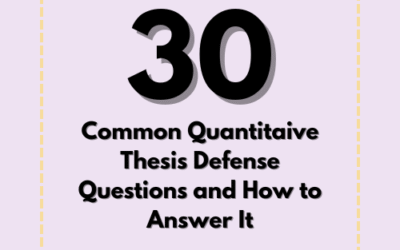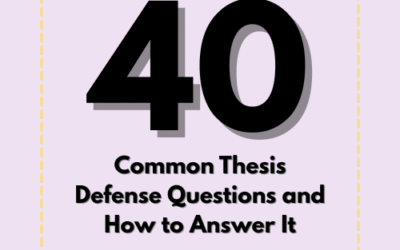Your thesis defense isn’t just a test—it’s a platform to showcase your expertise and passion. While preparation is key, many students overlook creative, high-impact tactics that can transform their performance. Here are five unique strategies (no repeats from past guides!) to help you captivate your committee and leave a lasting impression.
1. Turn Your Research Into a Compelling Story
Actionable Steps:
- Structure like a narrative: Start with a “hook” (why your research matters), build tension (the problem), and resolve it (your findings).
- Use relatable analogies: Compare complex concepts to everyday scenarios (e.g., “Think of this algorithm like a traffic light system”).
- Highlight personal growth: Briefly share challenges overcome during research to humanize your journey.
Why It Works: Stories are 22x more memorable than facts alone. A narrative approach keeps your audience engaged and invested.
2. Master Visual Storytelling (Beyond Bullet Points)
Actionable Steps:
- Design slides as visual aids, not scripts: Use high-quality images, flowcharts, or short animations to explain processes.
- Color-code key themes: Assign consistent colors to variables or sections for instant recognition (e.g., blue for data, green for conclusions).
- Incorporate “before-and-after” visuals: Show how your work bridges a gap (e.g., “Existing model vs. your improved framework”).
Pro Tip: Use Canva or PPT’s Morph transition to create polished, dynamic slides that guide attention.
3. Control the Q&A Room with PREP
Actionable Steps:
- Use the PREP method:
- P oint: Restate the answer clearly (e.g., “Great question—my findings suggest…”).
- R eason: Explain your logic.
- E xample: Provide a case study or data point.
- P oint: Reiterate your conclusion.
- Redirect vague questions: Ask for clarification (“Are you asking about [X] or [Y]?”).
- Turn criticism into collaboration: Say, “I appreciate that perspective—have you seen similar trends in your own work?”
Why It Works: Structured responses reduce panic and showcase analytical thinking.
4. Tailor Your Delivery to Committee Personalities
Actionable Steps:
- Research their backgrounds: Review committee members’ recent publications or interests.
- Adjust your focus:
- For theory-driven members: Emphasize methodology rigor.
- For practitioners: Highlight real-world applications.
- Name-drop strategically: Reference a member’s work in your presentation (e.g., “As Dr. Smith noted in [Year], this gap has persisted…”).
Pro Tip: Address the chairperson first but maintain eye contact with all members.
5. Nail the Post-Defense Follow-Up
Actionable Steps:
- Send a thank-you note: Within 24 hours, express gratitude and reiterate enthusiasm for your work.
- Clarify revisions: If asked to revise, propose a timeline (e.g., “I’ll submit the updated chapter by [Date]”).
- Request feedback framing: Ask, “What would make this work publishable in [Journal]?” to align with committee expectations.
Why it works: This will help you accurately edit/revise your manuscript which saves time.
Conclusion
Your thesis defense is more than a requirement—it’s a chance to prove you belong in your academic community. By crafting a compelling narrative, mastering visuals, commanding Q&A sessions, tailoring your approach, and following up strategically, you’ll transform nerves into a polished, professional performance. Remember: Committees remember confidence, creativity, and clarity. Now go show them what you’re made of!

Let The Writeler Co. support you in achieving academic and professional excellence! Whether you need assistance with research writing, proofreading, editing, or data analysis, our expert team is here to help.
📩 Email us today or 📲 message us on our Facebook account to get started. Let’s make your work shine!





0 Comments